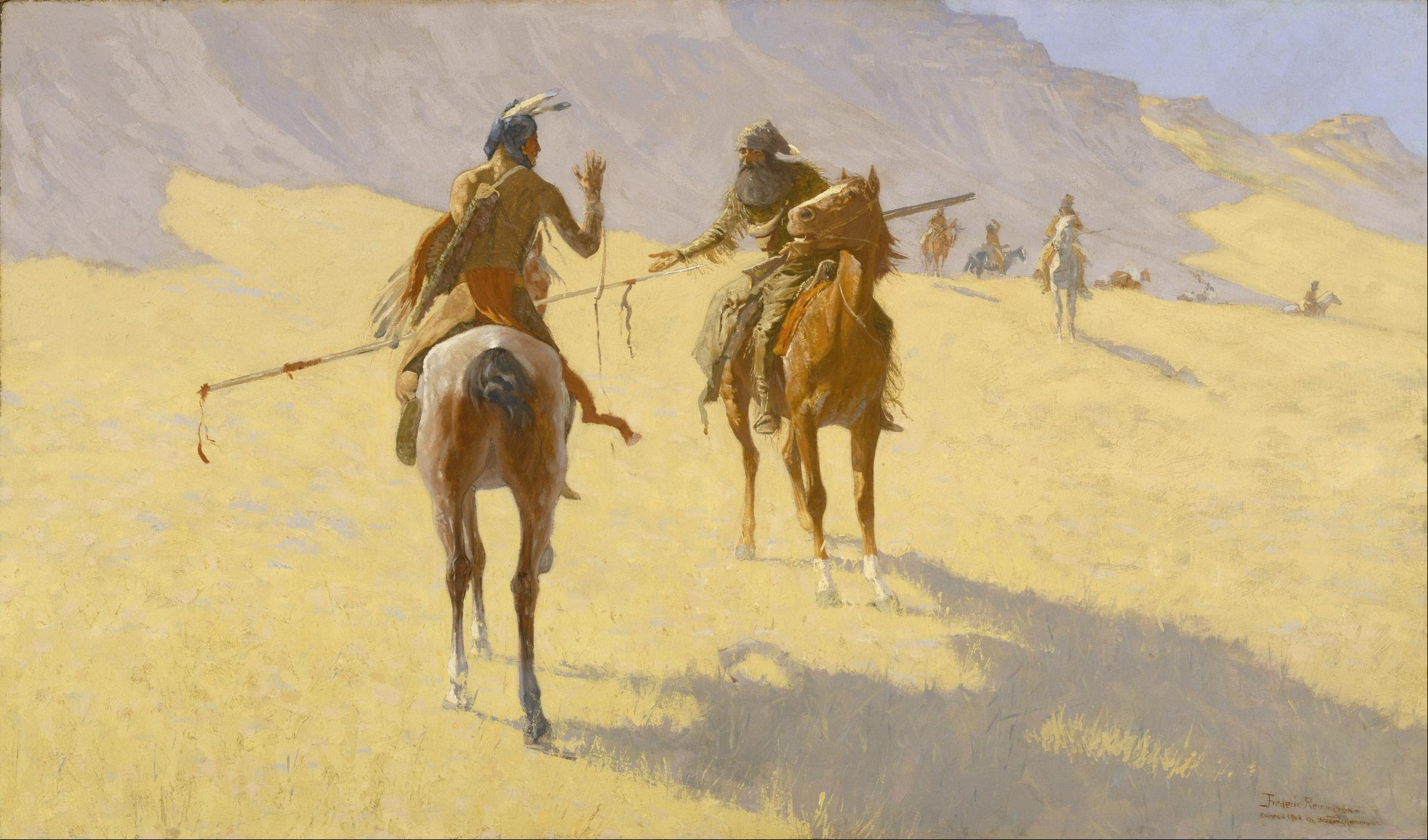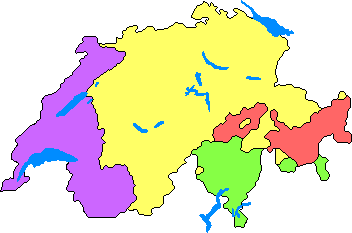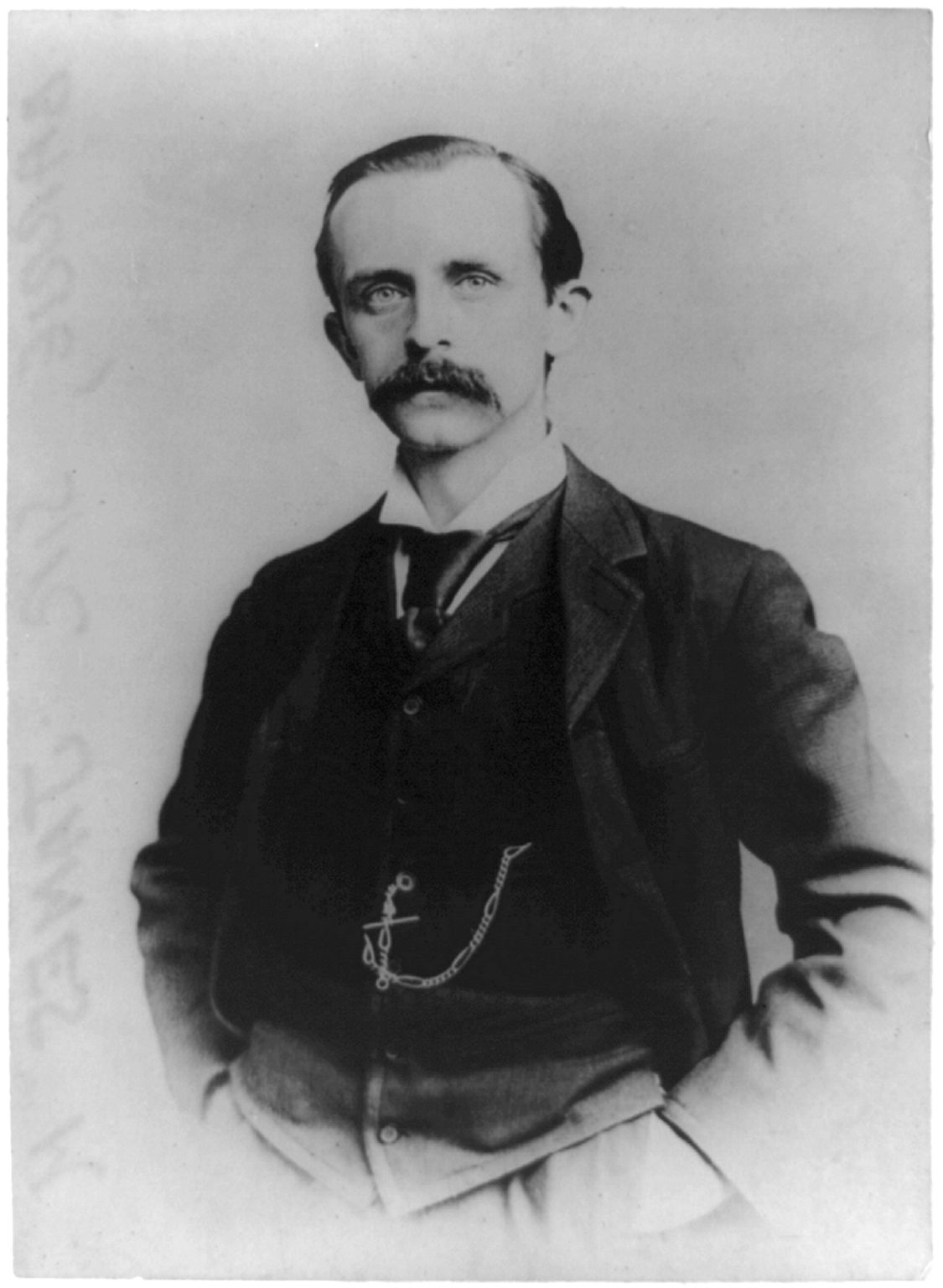|
How (greeting)
The word "how" is a pop culture anglicization of the Lakota word ', a Lakota language greeting by men to men. The term ''how'' is often found in Stereotypes of indigenous peoples of Canada and the United States, stereotypical and outdated depictions of Native Americans, made by non-Natives, in some Hollywood movies and various novels, e.g. those of James Fenimore Cooper or Karl May. Background The ''Oxford English Dictionary'' (OED) gives [] ("how") as the pronunciation, and claims Jesuit missionary Jean de Brébeuf had described the use of the term as an interjection of approval with the Wyandot people, Wyandot (Hurons). De Brébeuf described individual speakers using ''Condayauendi Ierhayde cha nonhwicwahachen'' to signify the end of their speaking, which was answered by the community with a long "Hooow". Longman Webster describes ''Howgh'' as a greeting of the Lakota, Dakota, and/or Nakoda peoples; giving "Háu kola" (''Hallo friend'') as a Lakota language greeting. However, ... [...More Info...] [...Related Items...] OR: [Wikipedia] [Google] [Baidu] |
Frederic Remington - The Parley - Google Art Project
Frederic may refer to: Places United States * Frederic, Wisconsin, a village in Polk County * Frederic Township, Michigan, a township in Crawford County ** Frederic, Michigan, an unincorporated community Other uses * Frederic (band), a Japanese rock band * Frederic (given name), a given name (including a list of people and characters with the name) * Hurricane Frederic, a hurricane that hit the U.S. Gulf Coast in 1979 * Trent Frederic, American ice hockey player See also * Frédéric * Frederick (other) * Fredrik * Fryderyk (other) {{disambiguation, geo ... [...More Info...] [...Related Items...] OR: [Wikipedia] [Google] [Baidu] |
Schweizerdeutsch
Swiss German (Standard German: , ,Because of the many different dialects, and because there is no defined orthography for any of them, many different spellings can be found. and others; ) is any of the Alemannic dialects spoken in the German-speaking part of Switzerland, and in some Alpine communities in Northern Italy bordering Switzerland. Occasionally, the Alemannic dialects spoken in other countries are grouped together with Swiss German as well, especially the dialects of Liechtenstein and Austrian Vorarlberg, which are closely associated to Switzerland's. Linguistically, Alemannic is divided into Low, High and Highest Alemannic, varieties all of which are spoken both inside and outside Switzerland. The only exception within German-speaking Switzerland is the municipality of Samnaun, where a Bavarian dialect is spoken. The reason Swiss German dialects constitute a special group is their almost unrestricted use as a spoken language in practically all situations of dail ... [...More Info...] [...Related Items...] OR: [Wikipedia] [Google] [Baidu] |
Wildecker Herzbuben
Die Wildecker Herzbuben are a German music group of the Volkstümliche Musik genre, coming from Wildeck in Hesse. Discography * 1990: ''Herzilein'' * 1991: ''Zwei Kerle wie wir'' * 1992: ''Das tut gut'' * 1992: ''Weihnachten zu Hause'' * 1993: ''Von Ganzem Herzen'' * 1993: ''Ist das nicht himmlisch'' * 1994: ''Am schönsten ist es daheim'' * 1995: ''Kuschelzeit'' * 1997: ''Weil wir Freunde sind'' * 1997: ''Die ewigen Juwelen der Volksmusik'' * 2000: ''Bubenstreiche'' * 2002: ''Die Sonne scheint auf alle gleich'' * 2003: ''Das Beste der Wildecker Herzbuben'' * 2004: ''Starcollection'' * 2005: ''So schön ist der Norden'' * 2006: ''Rutsch an meine Seite'' * 2007: ''Wahre Liebe'' * 2009: ''20 Jahre Herzilein'' Awards * Goldene Stimmgabel (1990 und 1991) * multiple Goldene Schallplatte and Platin-Schallplatte * Doppelplatin * RSH-Gold by radio station Radio Schleswig-Holstein * ''Edelweiß'' by magazine Frau im Spiegel * Wilfried Gliem achieved honorary citizenship Hono ... [...More Info...] [...Related Items...] OR: [Wikipedia] [Google] [Baidu] |
Gus Backus
Donald Edgar "Gus" Backus (September 12, 1937 – February 21, 2019) was an American singer. He started his career as a member of The Del-Vikings and later became a successful Schlager singer in Germany. Life and career Backus was born on Long Island and started his music career with the Del-Vikings, the first notable doo-wop group with both black and white members which had two ''Billboard'' Hot 100 Top Ten hits. After he was stationed as an Airman in the U.S. Air Force at Wiesbaden Air Base in 1957, Backus had to leave The Del-Vikings and started singing Schlager music in 1960s West Germany. He sang all his songs in German with an American accent. 19 of his songs between 1960 and 1967 made the charts, including eight Top Ten hits. He landed a Number 1 hit in the German charts with his song "Der Mann im Mond" ("The Man in the Moon") in 1961. Backus also did German cover versions of songs by Elvis Presley, whom he met at one time, Paul Anka, and Conway Twitty. In addition ... [...More Info...] [...Related Items...] OR: [Wikipedia] [Google] [Baidu] |
Carlo Karges
Carlo Karges (31 July 1951 – 30 January 2002) was a German musician known for his work as a guitarist and songwriter for the rock band Nena. Personal life Karges was born in Hamburg in 1951 and grew up there with his single mother. He began developing his musical abilities as a student, when he started to play guitar and to compose his own songs, and thereafter played as part of a number of groups, including Tomorrow's Gift and Release Music Orchestra. In 1971 he became a founding member of the group Novalis, in which he played as a guitarist and keyboardist. Karges died at the Eppendorf Clinic in Hamburg on 30 January 2002 at the age of 50, due to liver failure. He was buried in Hamburg's Ohlsdorf Cemetery. Nena In 1981 he joined Gabriele "Nena" Kerner, Rolf Brendel, Jürgen Dehmel, and Uwe Fahrenkrog-Petersen in establishing the eponymous band Nena. He wrote the lyrics of the band's most famous song, "99 Luftballons", released in 1983. He was attending a 1982 Rolli ... [...More Info...] [...Related Items...] OR: [Wikipedia] [Google] [Baidu] |
Nena (band)
Nena was a West German Neue Deutsche Welle band formed in West Berlin in 1981. In 1983 and 1984, their German-language song "" (and its English version, "99 Red Balloons") reached number one in the singles charts of countries around the world. History Formation and rise The band was formed in 1981 when vocalist Gabriele Kerner (Nena) came to West Berlin with drummer Rolf Brendel, her boyfriend at the time. There they assembled the other members of the band, which took its name from their lead singer's nickname (Spanish for "little girl"), which she had acquired as a toddler during a family holiday to Catalonia, Spain. The band wrote all of their songs themselves, typically working in pairs. They became overnight sensations in Germany when they performed their debut single " Nur geträumt" on German TV in August 1982, Nena herself wearing a distinctive short red miniskirt. The single reached number 2 in the German charts, a position it occupied for 6 weeks, and also climbed hig ... [...More Info...] [...Related Items...] OR: [Wikipedia] [Google] [Baidu] |
Peter Pan (1954 Musical)
''Peter Pan'' is a 1954 musical based on J. M. Barrie's 1904 play '' Peter Pan'' and his 1911 novelization of it, '' Peter and Wendy''. The music is mostly by Moose Charlap, with additional music by Jule Styne, and most of the lyrics were written by Carolyn Leigh, with additional lyrics by Betty Comden and Adolph Green. The original Broadway production, starring Mary Martin as Peter and Cyril Ritchard as Captain Hook, earned Tony Awards for both stars. It was followed by NBC telecasts of it in 1955, 1956, and 1960 with the same stars, plus several rebroadcasts of the 1960 telecast. In 2014, the musical was broadcast on NBC featuring several new numbers, and starring Allison Williams and Christopher Walken. The show has enjoyed several revivals onstage. In 2024, a national tour launched, directed by Lonny Price, with a new book by Larissa Fasthorse. Background and original 1954 production Several productions of Peter Pan were staged early in the 20th century, starti ... [...More Info...] [...Related Items...] OR: [Wikipedia] [Google] [Baidu] |
Peter Pan (1953 Film)
''Peter Pan'' is a 1953 American animated adventure fantasy film produced by Walt Disney Productions and released by RKO Radio Pictures. Based on J. M. Barrie's 1904 play '' Peter Pan, or the Boy Who Wouldn't Grow Up'', the film was directed by Hamilton Luske, Clyde Geronimi, and Wilfred Jackson. Featuring the voices of Bobby Driscoll, Kathryn Beaumont, Hans Conried, Bill Thompson, Heather Angel, Paul Collins, Tommy Luske, Candy Candido, Tom Conway, Roland Dupreee and Don Barclay, the film's plot follows Wendy Darling and her two brothers, who meet the never-growing-up Peter Pan and travel with him to the island of Never Land to stay young, where they also have to face Peter's archenemy, Captain Hook. In 1935, Walt Disney began considering plans to adapt Barrie's play into an animated feature. He purchased the film rights from Paramount Pictures in 1938, and began preliminary development in the next year. However, following the attack on Pearl Harbor, Disney shelved the ... [...More Info...] [...Related Items...] OR: [Wikipedia] [Google] [Baidu] |
What Made The Red Man Red?
"What Made the Red Man Red?" is a song from the 1953 Disney animated film ''Peter Pan'' with music by Sammy Fain and lyrics by Sammy Cahn, in which "the natives tell their story through stereotypical dance while singing". Some modern audiences consider it “racist and offensive” due to its exaggerated stereotypes. Although a similar depiction was displayed within J. M. Barrie's original play, later adaptations have reimagined the Natives, while the Disney version—and this song in particular—were said to have "doubled-down on racial stereotypes". It has been compared to the song " Savages" from the 1995 Disney film ''Pocahontas'', which contains negative lyrics regarding Native Americans; in contrast with "What Made the Red Man Red?", however, the offensive lyrics in "Savages" were written purposely, as they are sung by the villains of the movie, in order to illustrate the message that racism is wrong. Animation historians and pundits argue and affirm that the Indians, li ... [...More Info...] [...Related Items...] OR: [Wikipedia] [Google] [Baidu] |
Peter And Wendy
''Peter Pan; or, the Boy Who Wouldn't Grow Up'', often known simply as ''Peter Pan'', is a work by J. M. Barrie, in the form of a 1904 play and a 1911 novel titled ''Peter and Wendy''. Both versions tell the story of Peter Pan, a mischievous little boy who can fly, and has many adventures on the island of Neverland that is inhabited by mermaids, fairies, indians, and pirates. The Peter Pan stories also involve the characters Wendy Darling and her two brothers John and Michael, Peter's fairy Tinker Bell, the Lost Boys, and the pirate Captain Hook. The play and novel were inspired by Barrie's friendship with the Llewelyn Davies family. The play debuted at the Duke of York's Theatre in London on 27 December 1904 with Nina Boucicault, daughter of the playwright Dion Boucicault, in the title role. A Broadway production was mounted in 1905 starring Maude Adams. It was later revived with such actresses as Marilyn Miller and Eva Le Gallienne. Barrie continued to revise the p ... [...More Info...] [...Related Items...] OR: [Wikipedia] [Google] [Baidu] |
Jerry Mouse
Gerald Jinx Mouse, known simply as Jerry, is an American character and one of the two titular characters in Metro-Goldwyn-Mayer cartoon studio, Metro-Goldwyn-Mayer's series of ''Tom and Jerry'' theatrical animated short films and other animated media, usually acting as the protagonist opposite his rival Tom Cat. Created by William Hanna and Joseph Barbera, Jerry is an anthropomorphism, anthropomorphic (but usually silent) brown house mouse, who first appeared as a mouse named Jinx in the 1940 MGM animated short ''Puss Gets the Boot''. Hanna gave the mouse's original name as "Jinx", while Barbera claimed the mouse went unnamed in his first appearance. History ''Tom and Jerry'' cartoons The name "Jerry" was chosen by Geraint Rowlands, who submitted "Tom and Jerry" as potential names for the duo after an important Loews Inc. distributor in Texas asked for follow-ups to ''Puss Gets the Boot''. While the idea of a cat-and-mouse duo was considered shopworn by the 1940s, Hanna and Barbe ... [...More Info...] [...Related Items...] OR: [Wikipedia] [Google] [Baidu] |
Tom And Jerry
''Tom and Jerry'' is an American Animated cartoon, animated media franchise and series of comedy short films created in 1940 by William Hanna and Joseph Barbera. Best known for its 161 theatrical short films by Metro-Goldwyn-Mayer, the series centers on the enmity between the titular characters of a cat named Tom Cat, Tom and a mouse named Jerry Mouse, Jerry. Many shorts also feature several List of Tom and Jerry characters#Recurring characters, recurring characters. In its original run, Hanna and Barbera produced 114 ''Tom and Jerry'' shorts for MGM from 1940 to 1958. During this time, they won seven Academy Award for Best Animated Short Film, Academy Awards for Best Animated Short Film, tying for first place with Walt Disney's ''Silly Symphonies'' with the most awards in the category. After the Metro-Goldwyn-Mayer cartoon studio, MGM cartoon studio closed in 1957, MGM revived the series with Gene Deitch directing an additional 13 ''Tom and Jerry'' shorts for Rembrandt Films i ... [...More Info...] [...Related Items...] OR: [Wikipedia] [Google] [Baidu] |



